Sometimes it’s easy to think about the past and imagine that dresses and fashions didn’t really change all that much long ago.
However, that’s not at all the case. Each season brought its own trends and shapes in everything from sleeves to skirts to waistlines. If you look at fashion magazines just a year or two apart, you will notice some obvious differences, some major, some not. The year 1911 was no exception.
Here, with information taken from the September 1911 issue of the Delineator magazine, is a list of five of the popular fashion trends that year - all illustrations and text excerpts come from that issue.
1. Coat-Suits are Indispensable
You can see an example of a typical suit coat in the illustration above, on the left of the page.
“A red branch in the woods, a trace of hoarfrost on the ground, are signs which say very plainly, “Autumn is coming, prepare!” Of course, if we obey, we begin to see about a Fall suit. That is the first essential in a woman’s wardrobe. For many occasions, plain, strictly-tailored ones of conservative cut are the best. The materials in favor this season, rough tweeds and Scotch effects, and mannish suitings in broad, low-toned stripes, with a bright thread running through, make the severe lines of the newest models extraordinarily smart.”
2. Bolero Outlines Appear in Many Designs
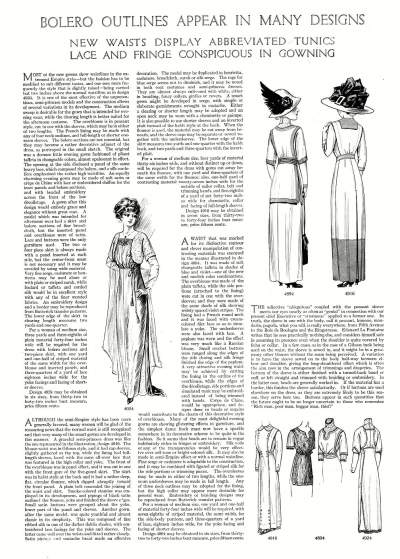 As waistlines became higher, cropped bolero jackets were a good fashion match. An example of a bolero is seen in the center illustration on the above page.
As waistlines became higher, cropped bolero jackets were a good fashion match. An example of a bolero is seen in the center illustration on the above page.
“Most of the new gowns show waistlines in the extremest Empire style – but the fashion has to be modified to suit different tastes, and one sees more frequently the style that is slightly raised – being carried but two inches above the normal waistline, as in design 4924. .. The bolero sections are not essential, but they may become a rather decorative adjunct of the dress, as portrayed in the small sketch… The opening at the side disclosed a panel of the same heavy lace, which composed the bolero, and a silk cordeliere emphasized the rather high waistline.”
3. Revers and Deep Cuffs are Important Accessories
“Revers” was not a fashion term I was familiar with, so I looked for a definition. Wikipedia defines it as: “A revers or rever is a garment or part of a garment that is reversed to display the lining or facing outside.” Here, that can refer to the lapel and cuffs, as seen in the larger illustration in the page above.
“Wide, drapy revers, which became immensely popular earlier in the season, are still in great vogue, and they may be noted in a variety of outlines on many of the smartest Autumn models. Design 4918 is one of the variations of the style and its simplicity is especially attractive… Some models made from the same design have long sleeves that fit quite closely at the wrists, and they are trimmed with rows of small buttons; shorter sleeves with cuffs may, however, be preferred to the former.”
4. Trim Tailored Skirts in Sturdy Fabrics
“Trotting skirts may adhere to straight lines without being exaggerated in their scantiness, and when reasonably narrow they are really becoming and extremely youthful looking. The distinctiveness of such a type may be readily perceived in design 1912, a five-piece skirt which may be made in semi-Empire style or with a regular waistline, and in either clearing or shorter length. Although the lower edge measures two yards and one-quarter, it is tube-like in outline. The box-plaited back gore is joined in panel effect, and a graduating line of stitching finishes this simulated loose panel. It is a very excellent arrangement, for this popular style-feature may be embodied without making it actually loose from the skirt – a point many woman object to.”
5. Large Quantities of Buttons
You can see a definite example of the “button” trend in the center outfit above.
“…Or if buttons are used elsewhere on the dress, as they are extremely likely to be this season, they serve here [sleeves] too. Buttons appear in such quantities that the future ought to be no longer uncertain to those who remember ‘Rich man, poor man, beggar man, thief!’”
I also leave you with one final illustration from this issue, in which you will notice the revers and the higher waists, as well as some very ornate hats – which although they weren’t mentioned here, are always obvious in fashion sketches from this time.

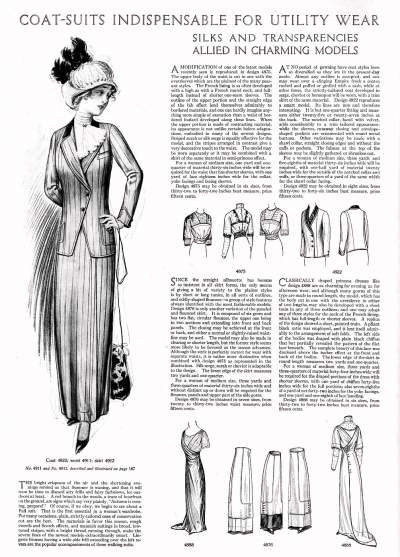
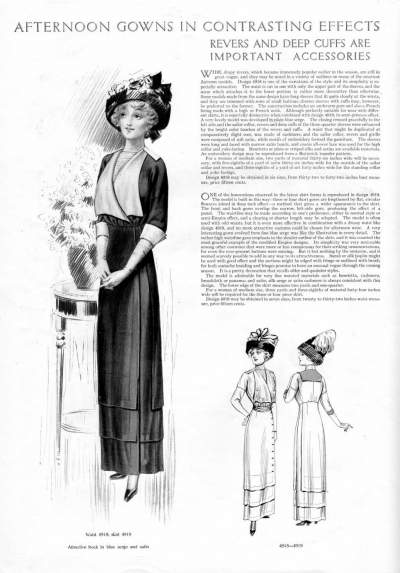
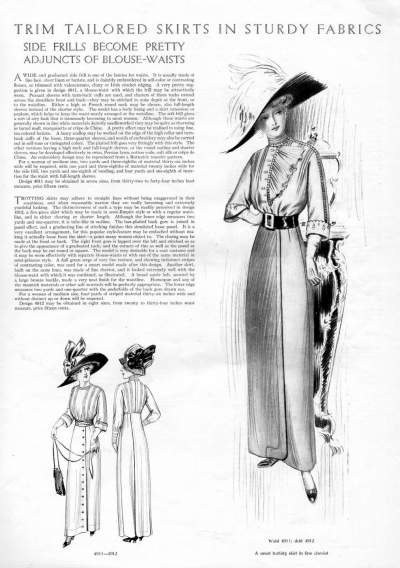
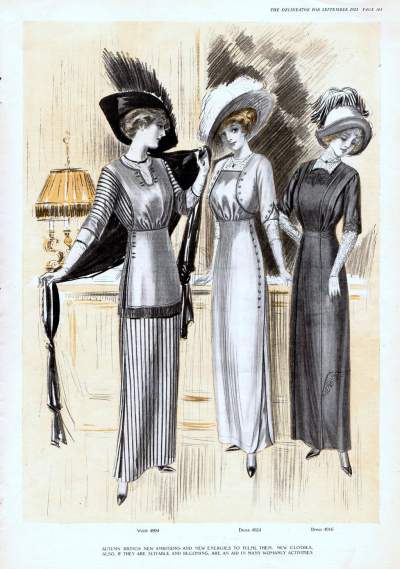
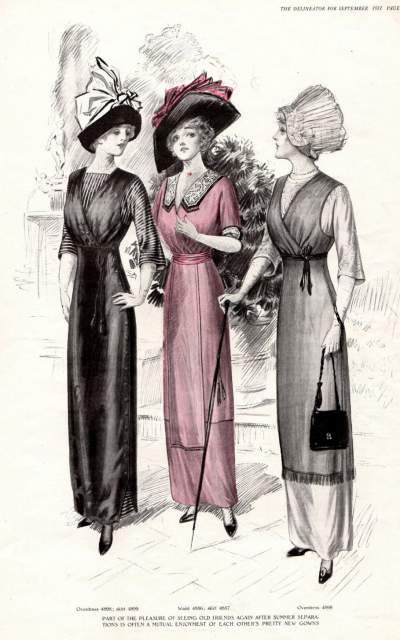


{ 0 comments… add one }